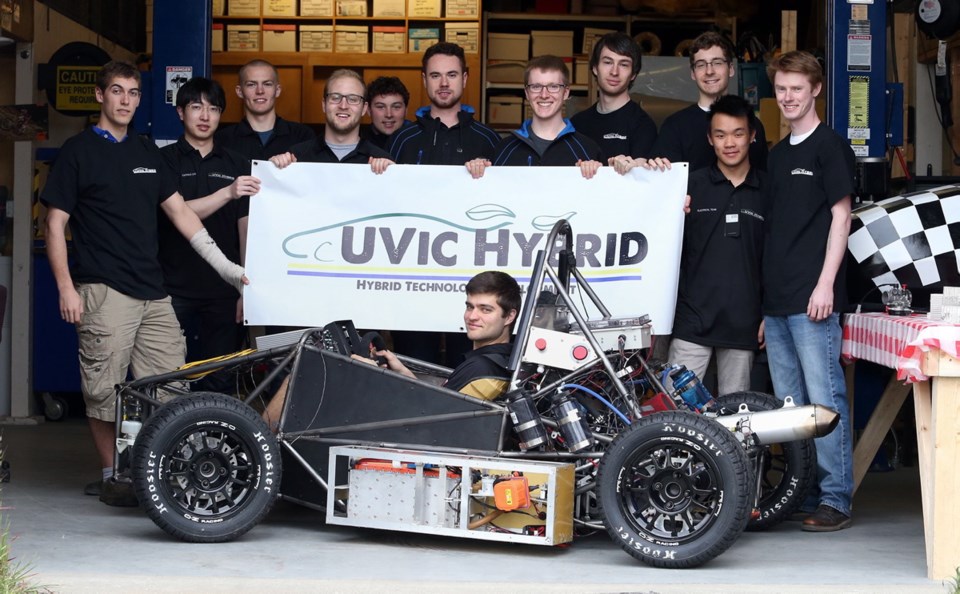In September, all they had to work with was a target date on the calendar — April 27.
But in the last eight months, a team of University of Victoria students have managed to conceive, design and build a race car that will hit the track in competition next week.
The group of 40 students made up of mechanical, electrical, computer and software engineers and colleagues from UVic’s business programs have completed a car that will take on teams from 35 schools starting Wednesday at the annual Formula Hybrid competition in New Hampshire.
“The goal is to create a hybrid race car that is as efficient as possible while being as high-performance as possible,” said Ted Alley, a third-year mechanical engineering student and co-lead of the build team.
And doing so in eight months means at this point the car has not been fully tested.
“Building a hybrid race car in eight months is really something that people just don’t do,” said Alley. “In September, we literally had nothing. Now we have a car. It’s really coming down to the last minute.”
While 40 students had hands in the creation of the car — including raising the necessary funds, sponsorships and in-kind help to build it — only nine will travel to the competition, founded by the Thayer School of Engineering at Dartmouth in New Hampshire. The competition is a design and engineering challenge for undergraduate and graduate university students to build a formula-style electric or plug-in hybrid race car and compete in a series of events. It takes place each spring at the New Hampshire Motor Speedway in Loudon.
UVic is competing in five events. Two of them are presentations on project management and design, while there are three dynamic events — acceleration, a timed circuit and an endurance race that gives drivers a certain amount of fuel and electricity and measures to see how quickly they can complete a 44-kilometre course.
Alley said the car’s top speed is 135 kilometres per hour and it can go from zero to 100 kilometres per hour in less than five seconds.
“Of the first-year teams there, I think we will fare quite well,” said Alley, noting some teams have been involved in the competition for seven years.
This is UVic’s first entry at Formula Hybrid. Last year a UVic team finished a three-year project to rebuild a 2013 Chevrolet Malibu for the annual Advanced Vehicle Technology Competition — EcoCAR 2.
That challenge, was to reduce the environmental impact of a stock Malibu by improving fuel efficiency and reducing emissions, while maintaining or improving vehicle performance and consumer appeal.
Alley and co-leader Ryan Johnston were part of EcoCAR 2, but noted there were only four students who remained from last year’s team. “[The high turnover] I think speaks well for UVic’s engineering program that so many could come in and pick this up so quickly,” he said.
“This competition is also more accessible to a greater variety of students. EcoCAR was heavily research-oriented and relied heavily on a deep understanding of engineering. Most of the people on EcoCAR were graduate students, while the Formula Hybrid car is more open to undergrads and that is really cool,” he said.
Alley, who will spend his summer co-op term working with electric car maker Tesla Motors in California, said not all of the team are into cars. “Some joined and had never taken an interest in cars but are doing something super cool with software or design,” he said.



